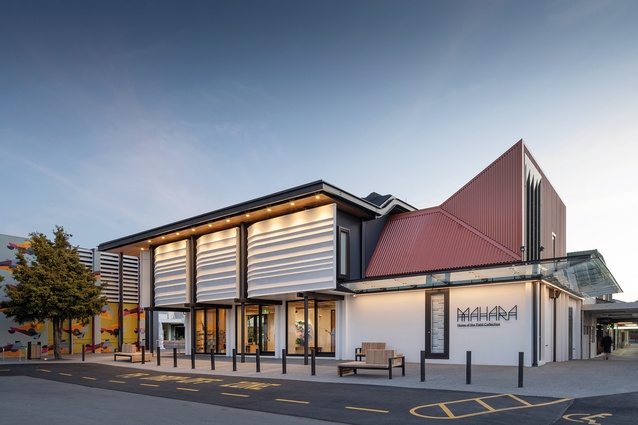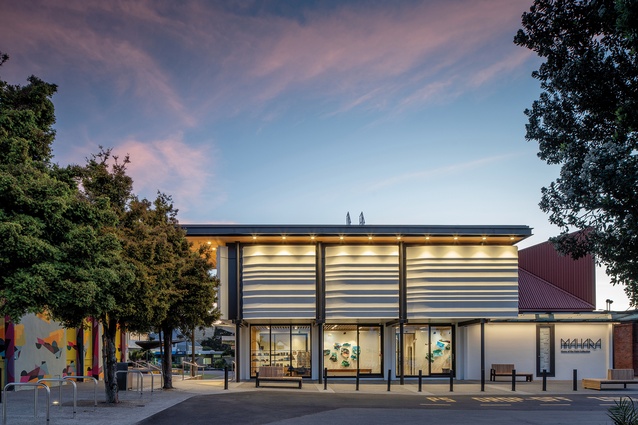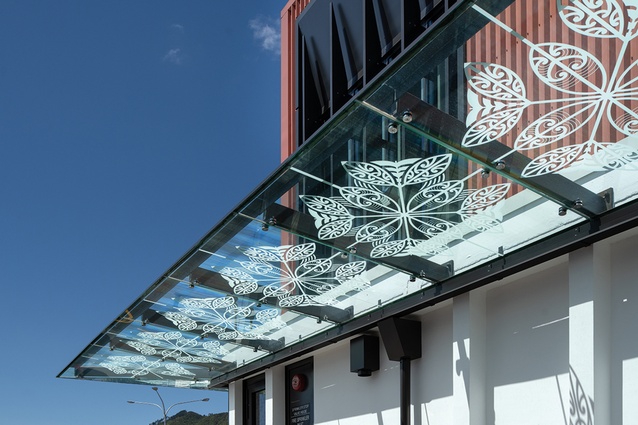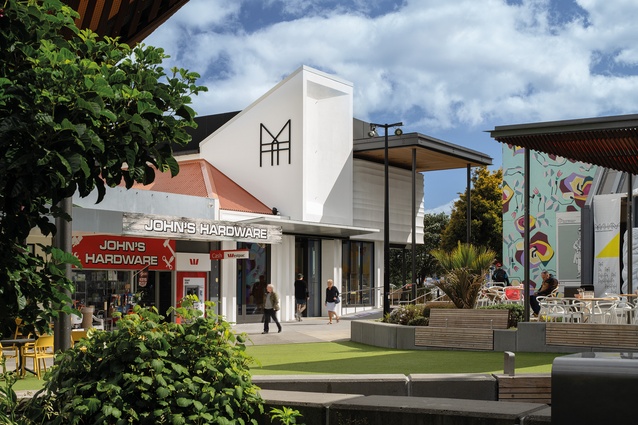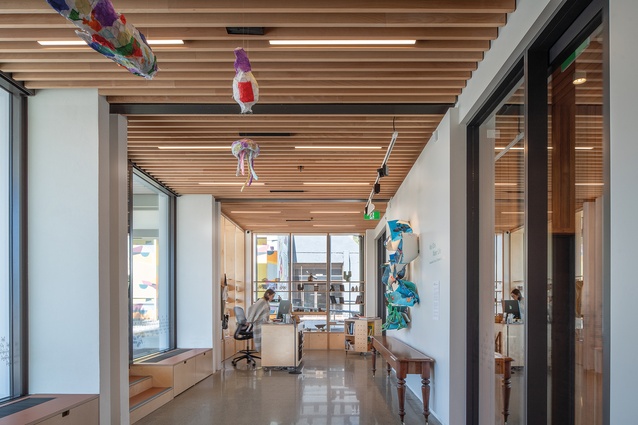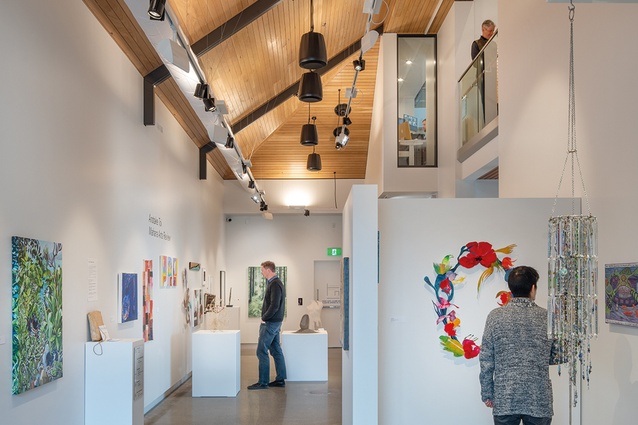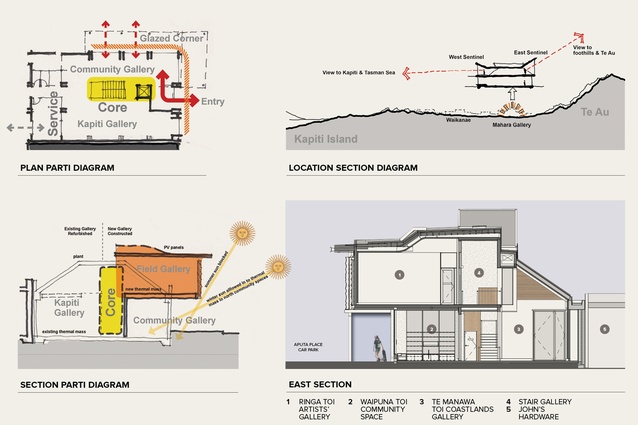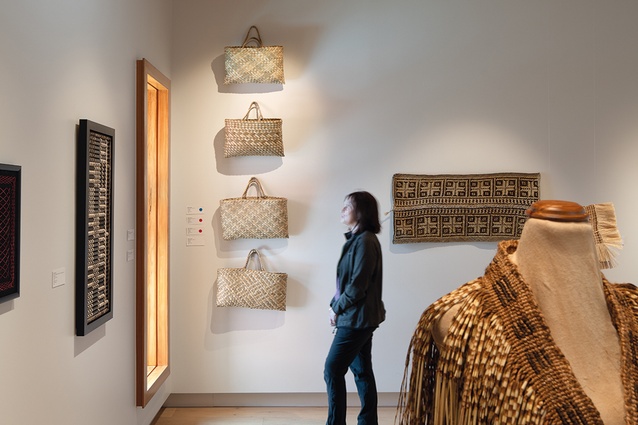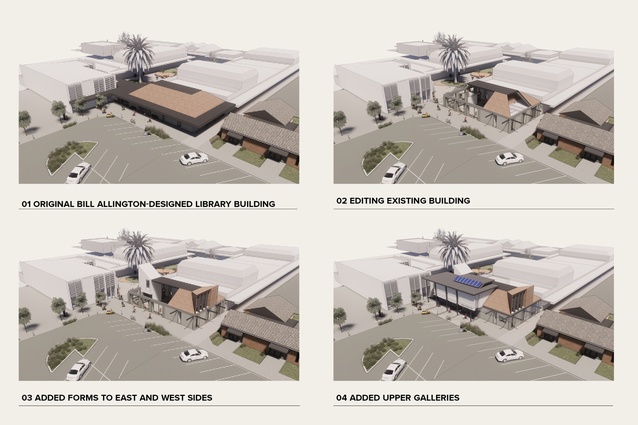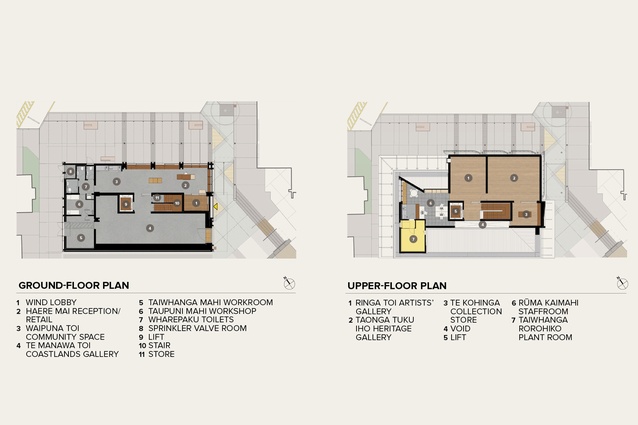Modesty and verve
Mark Southcombe visits the Toi Mahara gallery redevelopment in Waikanae by Athfield Architects and explores a beautiful dialogue between old and new.
The Kāpiti Coast District spans Paekākāriki, Paraparaumu, Waikanae and Ōtaki with an architectural history that runs deep. Mahara means memory or thinking deeply. The name has long connections to Te Āti Awa, Taranaki and a house at Parihaka supported by Wiremu Te Kākākura Parata in the 1880s;1 it was also the name of Hemi Matenga and Hira Parata’s Waikanae Guest House during the early 20th century, described as “the pride and joy of Waikanae”.2 The name Mahara Place continues as a laneway and open mall courtyard of the Waikanae suburban town centre, a landscaped space redeveloped by Boffa Miskell and team in 2019. Mahara Place also threads through to Whakarongotai Marae at the south and the new Toi Mahara art gallery at the northern corner of the mall courtyard.
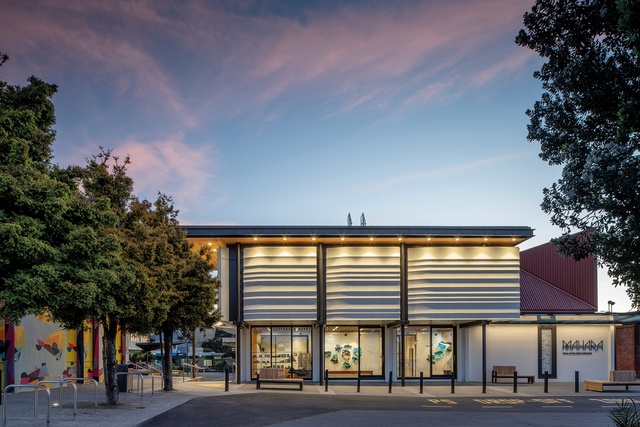
Since 1996, Toi Mahara gallery has had the good fortune to occupy a robust, understated Bill Allington-designed building, originally the Waikanae Library and public toilets in 1976. The gallery building has always had a strong urban presence, being well sited with “great bones’’.3 Its restrained blockwork, in-situ concrete beams and brown tile roof contrasted with the retail neighbourhood, giving a welcome sense of the civic in a lightweight architectural milieu. Allington’s design had a strong structural order and a skeletal rhythm formed by double blockwork columns and steel roof beams. Its simple formal logic remained clearly evident despite a series of additions over time, including a mezzanine floor along one side. The interior space contrasted with the exterior. Heart rimu-lined coffered ceilings and a strong, simple spatial character were easily understood and had adapted well to changing demands over time. It was warm and inviting, like the inside of a protective jewellery box.
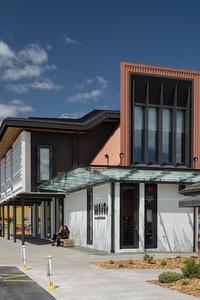
Toi Mahara is a boutique art gallery with roots deep in local community arts and crafts groups. It curates history exhibitions as well, reflecting a depth of locally grounded content. For example, the new gallery opening shows included contemporary works by Elisabeth Vullings from Te Horo’s The Kilns Project and Wiriwhiria, with historic works by the Ōtaki Weavers Collective. The gallery benefits from the curation of Janet Bayly and an inclusive and collective sensibility tuned to the diversity of the community. Toi Mahara also holds the Field Collection, an historically significant set of Frances Hodgkins pieces and associated works. These taonga were a key motivation for the gallery redevelopment by the Mahara Gallery Trust, the Field Collection Trust and the Kāpiti Coast District Council.
The gallery redevelopment occurred through an invited architectural competition, won by a team from Athfield Architects. The winning design respected the value of the original building and somehow combined modesty and verve to create a strong new identity and significantly adapt the gallery building for the next generations.
Sustainable remaking of existing architecture requires confidence and humility from its architects. They must work with what exists and restore, edit, add to and recreate it without losing its essence or creating a monster. In this case, new architectural rhythms and patterns occur from the framework of the previous composition in the manner of a jazz improvisation.
For Toi Mahara, the new work enters a beautiful dialogue with the original that is respectful yet critical. It is structured by a new formal concept: the sentinels, two vertical skyward-facing forms that respond to and visually reference the major landscape elements of the district — Kāpiti Island and the Tararua Range. They are located on diagonal corners of the original hip roof structure; this key idea also allows the spatial and formal logic of the original building to remain legible within a strong new design.
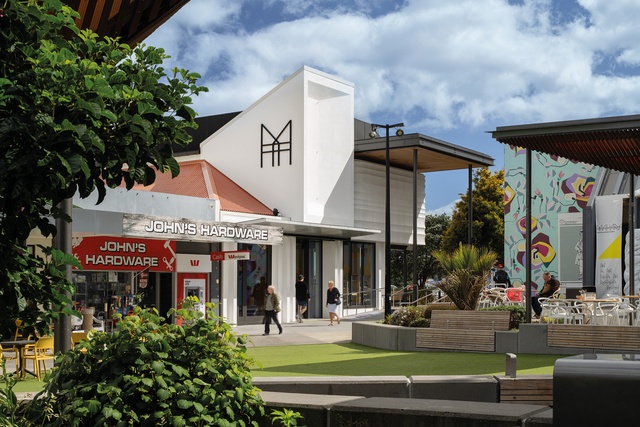
The design is hyper-efficient and tiny in comparison to other galleries for similar-sized local authorities. This was a key part of its design challenge — the overall building area is modestly increased with additional first-floor area added on two sides of a now-centralised mezzanine floor. All spaces have to work hard with multiple overlapping functions. This starts with the reception/retail/community space that also acts as exhibition, education and hospitality space during openings. The major gallery, Te Manawa Toi Coastlands Gallery, is also a ground-floor community arts-focused facility. It is sensitively recrafted, with its volume restored and brought to life, complete with coffered ceilings and an operable visual connection to Mahara Place.
On the first floor, there are two new smallish black-box exhibition galleries. Ringa Toi Artists’ Gallery has a glimpse to Kāpiti Island through an operable slot window seat, and access is also given to the staff/shared workroom. Next door is Toanga Tuku Iho Heritage Gallery. It accommodates exhibitions from the Field Collection and travelling exhibitions. This gallery is, in turn, visually connected to a small collection store, Te Kohinga. Linking the upstairs spaces is the now-folding mezzanine stair, reconceived with new height and skylights above, an adjacent lift and a new balcony/landing with glimpses into the staff/workroom and collection store and overlooking the main gallery below. This key moment in the experience of the gallery celebrates the renewed building as a whole with its augmented clarity and simplicity.
The interior architecture design, led by Kim Salt, is restrained and elegant in its realisation, integrating old and new material and colour seamlessly, with an understated quality finish and some hidden splashes of colour that reveal themselves over time.
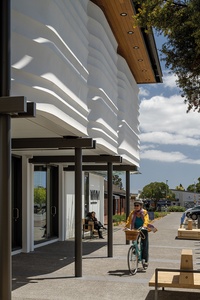
Back-of-house functions are unseen but significant. Workshop and workroom functions and bathrooms are well planned and interconnected. The plant room above is at the heart of an economic solution, creating a progressive series of space-conditioning standards, tailored to the needs of each area and recycling the air from one space to another. It is described as onion-like in its characteristics,4 from climate-controlled environments for the collection storage shifting, sequentially, through the series of gallery spaces, each with less-demanding and less-expensive conditioning requirements, and ending with the largest community gallery space. This solution not only reduces mechanical plant and plant-room costs, it also reduces running costs.
From an urban perspective, an expressive double-height canopy on the corner of Mahara Place creates a fantastic new civic-scale entrance to the gallery and the central mall courtyard. Within the canopy, first-floor horizontal GRC panels, with fluting inspired by the potter’s craft, are reminiscent of the ephemeral morning mist over Kāpiti Island and the Tararua Range. These elements express a distinctive new visual identity for the gallery. Toi Mahara not only recreates the gallery, it recrafts its urban edges, linking to a laneway on the service side, activating the northern edge of the gallery building and creating a landscape gathering space near the new main entrance on Mahara Place, all integrated seamlessly with the existing landscape.
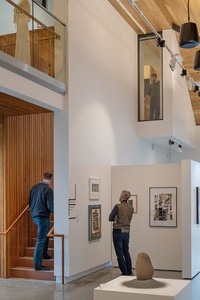
The tension between external visual connection and gallery wall space is resolved in favour of community access and what a difference it makes. Even disregarding the opening weekend excitement, the visitor numbers to the gallery have doubled. Several artist collaborations have also been significant. Instrumental are artist Tracey Morgan’s beautiful graphic works on the new light, bright glass canopies; these cast intriguing shadows onto the gallery walls throughout the day. The sentinel formal expression also took on another life. This occurred through the extraordinary work of Catherine Griffiths: a smart new graphic identity for the gallery, which adds another layer to the building significance.
Toi Mahara really has come of age, remembering its roots, standing its ground and re-imaging a visionary future. It is memorable architecture worthy of its name.
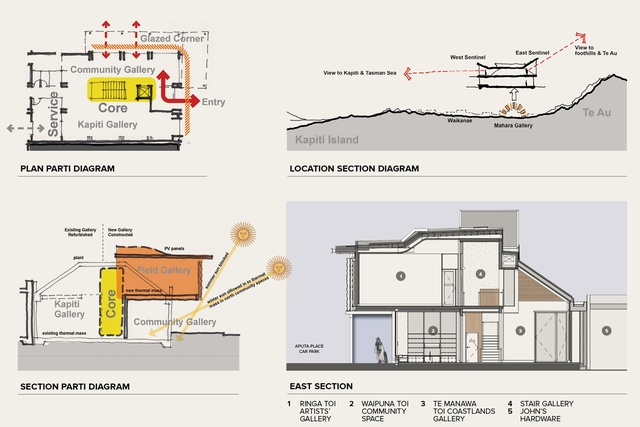
References
1. Queenie Rikihana-Hyland, Kuia Te Āti Awa, speaking at Whakarongotai Marae, 17 October 2013.
2. Chris Maclean, Kāpiti. Wellington: Whitcombe Press, 1999, p. 100.
3. Nick Mouat, interview with the author, 5 April 2024.
4. 335 Building Systems Engineering.


